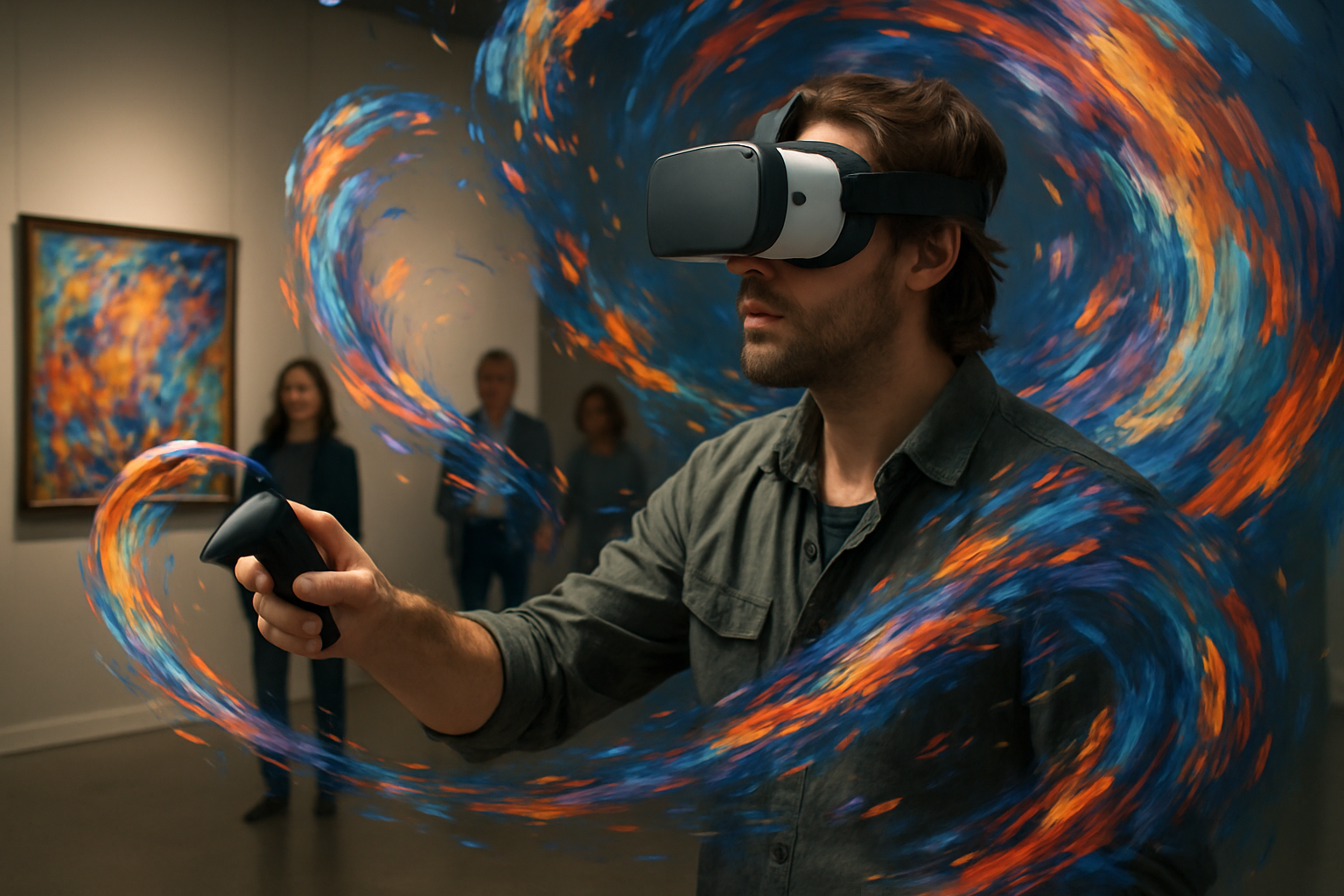Holographic Artistry: Redefining Visual Boundaries
In the ever-evolving landscape of creative expression, holographic artistry emerges as a captivating fusion of technology and imagination. This groundbreaking medium pushes the boundaries of visual perception, challenging traditional notions of dimensionality and interactivity in art. As holographic installations captivate audiences worldwide, artists and technologists collaborate to unlock new realms of aesthetic possibility, ushering in an era where light becomes a tangible artistic material.

Early pioneers like Margaret Benyon and Rudie Berkhout started experimenting with holographic techniques in the 1970s, creating ethereal images that seemed to float in mid-air. These initial forays into holographic art were limited by technological constraints, often resulting in monochromatic and static displays. Despite these limitations, the medium’s unique ability to capture and manipulate light sparked the imagination of artists worldwide.
Technological Advancements Fuel Artistic Innovation
The rapid advancement of digital technology in the late 20th and early 21st centuries has dramatically expanded the possibilities of holographic art. High-powered lasers, sophisticated computer algorithms, and improved display technologies have enabled artists to create increasingly complex and dynamic holographic installations. Modern holographic artists can now manipulate color, movement, and interactivity in ways that were once thought impossible.
One of the most significant developments has been the integration of real-time rendering and motion tracking. This allows holographic artworks to respond to viewer movements, creating immersive experiences that blur the line between observer and participant. Artists like Hiro Yamagata and Matthew Schreiber have leveraged these technologies to create large-scale installations that transform entire spaces into shimmering, interactive environments.
The Aesthetic Language of Light and Space
Holographic art introduces a unique aesthetic vocabulary, challenging artists to think in terms of light, space, and perception. Unlike traditional mediums, holography allows for the creation of volumetric images that exist without a physical substrate. This fundamental shift in materiality opens up new avenues for exploring themes of presence, absence, and the nature of reality itself.
Artists working in holography often play with concepts of dimensionality, creating illusions that seem to defy the laws of physics. Dieter Jung’s holographic works, for example, explore the interplay between two-dimensional and three-dimensional space, creating shimmering geometries that shift and transform as the viewer moves. These pieces not only captivate the eye but also engage the mind, prompting viewers to question their perceptions of depth and form.
Cultural Impact and Exhibition Challenges
As holographic art gains prominence, it is increasingly finding its way into major galleries and museums worldwide. The medium’s ability to create immersive, otherworldly experiences has made it a popular choice for both standalone exhibitions and as part of larger multimedia installations. However, the unique nature of holographic art presents distinct challenges for curators and exhibition designers.
The sensitive nature of holographic displays often requires carefully controlled lighting conditions, which can limit the flexibility of exhibition spaces. Additionally, the interactive elements of many holographic works necessitate thoughtful consideration of visitor flow and engagement. Despite these challenges, institutions like the MIT Museum and the Center for the Holographic Arts have successfully pioneered new approaches to exhibiting and preserving holographic artworks.
The Future of Holographic Expression
As technology continues to evolve, the future of holographic art looks increasingly bright. Emerging technologies like augmented reality (AR) and light field displays promise to further expand the possibilities of holographic expression. These advancements may soon allow for holographic art that exists beyond the confines of specialized display environments, integrating seamlessly into everyday spaces.
The potential applications of holographic art extend far beyond the gallery wall. From architectural design to public art installations, holography offers new ways to transform and enhance our built environment. As the medium matures, we can expect to see holographic elements increasingly incorporated into a wide range of artistic and design disciplines, blurring the lines between the physical and the virtual.
In conclusion, holographic artistry represents a bold new frontier in visual expression. By harnessing the ethereal qualities of light and space, artists working in this medium are redefining our understanding of what art can be. As technology and creativity continue to intersect in exciting new ways, holographic art stands poised to play a pivotal role in shaping the aesthetic landscape of the future.





